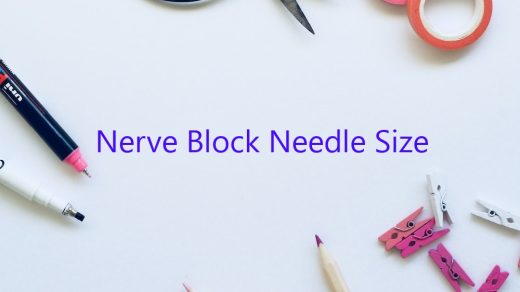A kitchen faucet dripping is not only a nuisance, but it can also be a sign of a more serious problem. If your kitchen faucet is dripping, it is important to determine the cause and take the necessary steps to fix it.
There are a few common reasons why a kitchen faucet might be dripping. One possibility is that the faucet is old and needs to be replaced. Another possibility is that there is a leak in the faucet’s plumbing. If the problem is a leak, the faucet might need to be tightened or a new washer may need to be installed.
If the kitchen faucet is dripping because of a leak, it is important to fix the leak as soon as possible. A leak can cause water damage to your kitchen and can also lead to expensive repairs.
If you are unable to fix the kitchen faucet drip yourself, you may need to call a plumber. A plumber can inspect the faucet and determine the cause of the leak. He or she can then make the necessary repairs.
A dripping kitchen faucet can be a nuisance, but it is important to determine the cause of the drip and take the necessary steps to fix it. If you are unable to fix the drip yourself, you may need to call a plumber.
Contents
How do you fix a dripping kitchen faucet?
A dripping kitchen faucet can be a real annoyance, wasting water and costing you money. But it’s a problem that can be easily fixed. Here’s how:
1. Shut off the water supply to the faucet.
2. Remove the handle by unscrewing it from the valve.
3. Inspect the valve and washer for damage.
4. If the valve or washer is damaged, replace them.
5. Reattach the handle and turn on the water.
6. Test the faucet by running water through it.
If the faucet is still dripping, you may need to replace the faucet cartridge.
Why does my faucet drip after I turn it off?
If you’ve ever turned off a faucet and had it continue to drip, you’re not alone. This is a common problem, and there are a few reasons why it happens. Let’s take a look at some of the most common causes of faucet drips, and what you can do to fix them.
One common cause of faucet drips is a worn-out washer. This is a small rubber disk that sits between the faucet handle and the valve stem. Over time, the washer can wear out, which can cause the faucet to drip. If this is the problem, you can usually fix it by replacing the washer.
Another common cause of faucet drips is a leaky valve seal. This is a seal that sits around the valve stem, and it can wear out over time. If the seal is leaking, it can cause the faucet to drip. You can usually fix this by replacing the seal.
A third common cause of faucet drips is a faulty valve. This is a problem with the valve itself, and it can usually be fixed by replacing the valve.
If you’re having problems with a faucet drip, the best thing to do is to call a plumber. They’ll be able to diagnose the problem and fix it for you.
Why does my kitchen faucet drip after I turn it off?
There are a few reasons why your kitchen faucet may start dripping after you turn it off. One possibility is that the faucet was not turned off completely, and some water is still flowing through the pipes. This can cause the faucet to drip after you turn it off.
Another possible reason is that the faucet was installed incorrectly and the washer is not sealing properly. This can cause water to leak out and drip from the faucet.
Finally, the faucet may be old and worn out, and the seals and washers may be deteriorating. This can also cause the faucet to drip after you turn it off.
If your kitchen faucet is dripping after you turn it off, there are a few things you can do to fix the problem. If the faucet was not turned off completely, make sure to turn it off completely shut off the water supply to the faucet. If the faucet was installed incorrectly, you may need to call a plumber to fix it. If the faucet is old and worn out, you may need to replace the faucet altogether.
What is the most common cause of dripping faucets?
Most dripping faucets are caused by a worn-out washer. The washer is a small disc that is sandwiched between the faucet handle and the valve seat. When you turn the faucet on, the washer is forced against the valve seat, which creates a watertight seal. As the washer ages, it becomes less elastic and can no longer create a watertight seal. This allows water to seep past the washer and drip out of the faucet.
Other causes of dripping faucets include worn-out valves and loose faucet handles. If your faucet is dripping, you can usually fix the problem by replacing the washer, valve, or faucet handle.
Why is my faucet dripping under the sink?
If your faucet is dripping under the sink, you’re not alone. This is a common problem, and there are several possible causes.
One common reason for a faucet to drip under the sink is a worn-out washer. If this is the case, you can usually fix the problem by replacing the washer.
Another possible cause of a dripping faucet is a loose connection between the faucet and the sink. This can often be fixed by tightening the connection.
If you can’t determine the cause of the dripping faucet, you may need to call a plumber to help you troubleshoot the problem.
How do you fix a dripping kitchen faucet with two handles?
If your kitchen faucet is dripping, you may be able to fix it yourself. Here’s how to do it:
First, turn off the water to the faucet by turning the valve in the direction of the water flow.
Then, remove the handle by unscrewing it counterclockwise.
Next, remove the screw at the end of the faucet spout and pull the spout off.
Now, clean the O-ring seal with a mild detergent.
Replace the O-ring seal and reassemble the faucet.
Turn on the water and check for leaks.
How do you stop a tap dripping water?
There are a few ways that you can stop a tap from dripping water. One way is to tighten the tap’s valve with a wrench. Another way is to replace the washer on the valve. You can also replace the entire valve.




